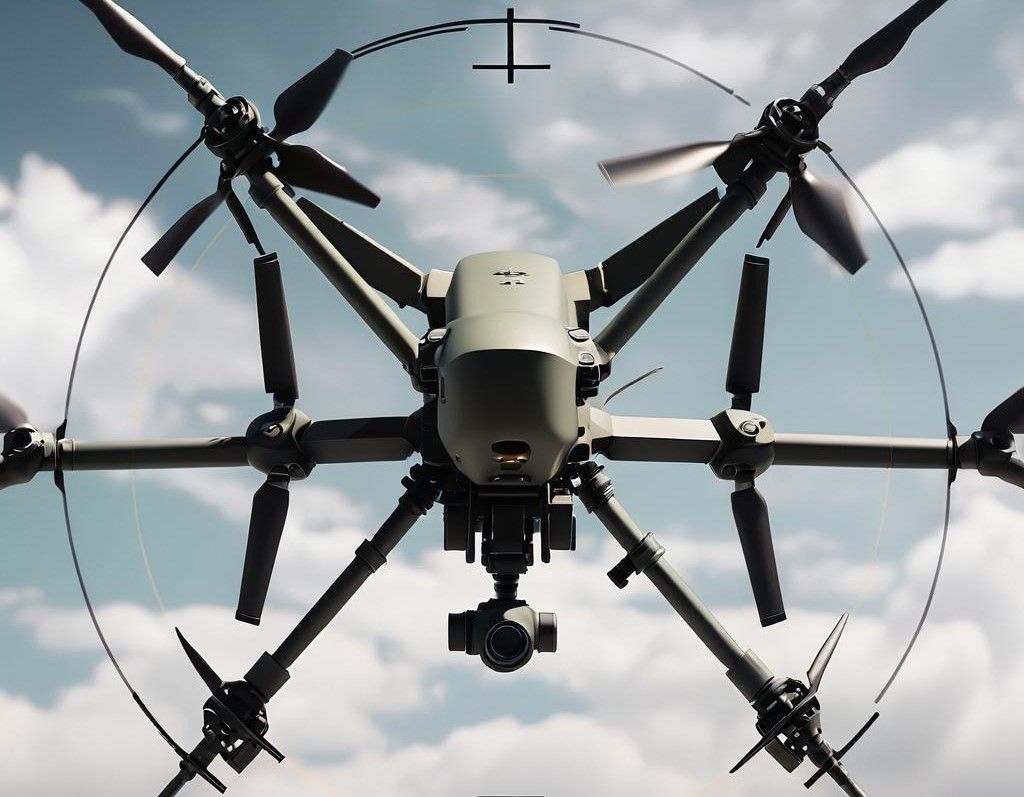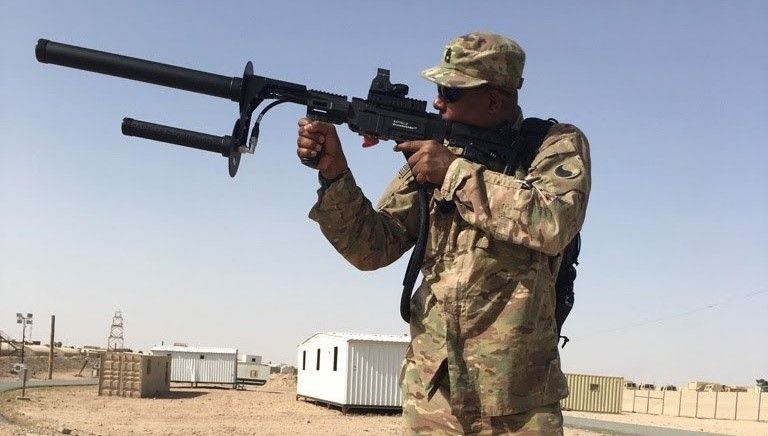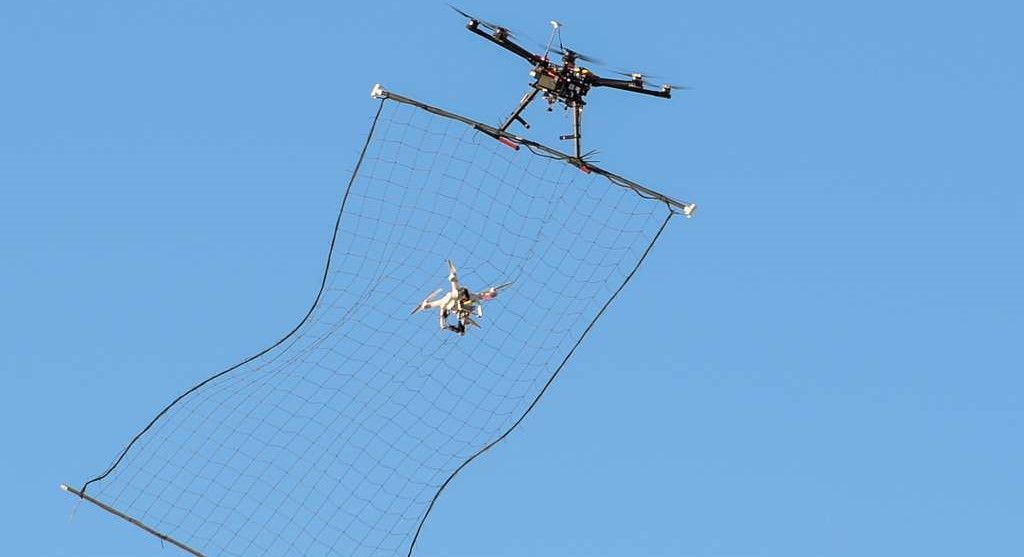Understanding Counter-Drone Capability
Exploring the innovative world of counter-drone technology.

Counter-drone technology is a rapidly evolving field that aims to mitigate the growing threat posed by the proliferation of uncrewed aerial vehicles (UAVs), commonly known as drones. As drones become increasingly accessible and affordable, they have found a wide range of applications, from recreational use to more nefarious purposes such as military surveillance, smuggling, operating as guided missiles, and even potentially being used in terrorist attacks. In response, a variety of counter-drone solutions have been developed to detect, track, and neutralize these airborne threats.
This is especially true on the battlefields of Ukraine, where the role of drones as artillery spotters, tank-busters, reconnaissance tools, or for killing individual fighters in the field has become ever more powerful.

As one drone operator in an interview with the NY Times, “FPVs [first person-view drones] play a critical role for us, as these toys are essentially mobile artillery that compensate for the lack of artillery ammunition. We work at the same distance as a mortar, but our accuracy is much higher.”
Because of this trend, counter-drone technology is also advancing at as significant pace.
“Both sides have quickly picked up on their adversary’s key FPV developments and tactics,” notes Samuel Bendett, an analyst on Russian drone capabilities and tactics at the Center for Naval Analyses in Virginia. “And now these technologies are maturing very rapidly for both sides.”
To date, the counter-drone systems which have gained the most traction include the following:
Detecting Systems
These work by notifying the operator when a drone enters a specified warning zone through either a portable or fixed-location device.
Drone Tracking Systems
These focus on following the path that a drone is taking enabling potential targets to be warned ahead of a strike. Some systems even allow for locating the drone’s operator.
Drone Identification
With increasingly crowded airspaces, identifying who is flying what is becoming important and is now possible.
“When a counter-uas system identifies a drone signature, the operator can then label a drone as friend or foe, allowing authorized drones to continue functioning without interruption from the C-UAS,” states a report by drone experts at the manufacturer Dedrone. “The system can also identify the model of the drone, giving security personnel information about the range, speed and payload capabilities of the drone in their airspace.”

Each of these systems function on sensors, such as radar, radio frequency (RF) analysers, acoustic sensors (which can create an image of the airspace based on the sounds of what is flying), and optical sensors.
Once spotted and identified, drone countermeasures can then be activated. Typically using one of the following approaches:
Kinetic Options
Options for kinetic mitigation are numerous as they include any method which physically prevents the drone from arriving at its goal. These can range from drones that shoot missiles, shoot nets, kamikaze drones, and even specially trained birds of prey. Though this is the more obvious way of destroying an enemy drone, these methods have lower success rates than non-kinetic techniques, as well as being ineffective against drone swarms.
· High Energy Options
High power microwave devices can disable a drone mid-flight using high power electromagnetic energy. A powerful microwave beam is strong enough to take down a small drone or a number of drones by ‘cooking’ its electronics with the beam’s intensity. While they have the clear advantage of working against drone swarms, they are expensive to develop and so are operated almost entirely by advanced militaries.
· Lasers
Another kind of high-energy mitigation that can be employed to take down hostile drones is the employment of lasers. These have the advantage of being effective against drones that are resistant to jamming, for example, those that run autonomously or without a radio signal direction. Lasers are also unbelievably cheap to run and can be attached to a vehicle or aircraft. However, they do not work well in bad weather, such as fog or light rain, and can only be fired at line-of-sight targets.

Non-Kinetic Options
· Radio Frequency Jamming
The communications link between the drone and its operator can be disrupted by a jammer. By jamming the signal, a counter-drone system can cause the drone to return to its default safety mode, which usually involves it gently settling down or navigating back to its launch place – a tactic that is effective against both individual drones and drone swarms.
Jammers can be integrated into extremely mobile, gun-like weapons or they can be fixed, stationary devices. They fire their jamming signal as either a multi-directional force or as a cone-shaped beam.
A typical example of a jamming system is the DedroneDefender, which, by weighing less than three and a half kilos and measuring only 56 cm long, is one of the most portable counter-drone weapons on the market.
It complies with military standard MIL-STD-810H and operates a narrow-band or ‘comb’ jamming system which lowers the possibility of interfering with other nearby electronic communications, such as Wi-Fi.
· Cyber-Takeover
Cyber-takeover is a technique for controlling a drone from a distance by impersonating to be the control centre. The process involves breaking into the drone and effectively fooling it into switching from its authorised controller. Through cyber-takeover, forces are able to control an enemy drone's flight and gain access to its camera, weaponry, and data.
While having obvious benefits when successful, cyber-takeover is challenging for two reasons. Firstly, many drones change frequency regularly (so-called ‘hopping’) to maintain control, and secondly, the interceptor needs to maintain a strong, direct signal in order to override the original commands.

Depending on the particular threat and the target being protected, each strategy has advantages and disadvantages.
As the drone landscape continues to evolve, so too must the counter-drone technologies that aim to keep apace and ensure the safety of airspaces, critical infrastructure, and the general public. The development of these advanced systems requires a multidisciplinary approach, combining expertise in fields such as aerospace engineering, electronics, and computer science, to create a comprehensive and effective defence against the growing drone threat.
By investing in cutting-edge detection, tracking, and interdiction capabilities, it is possible to stay one step ahead of those who would seek to leverage drone technology for terrorist purposes or to counter their use on the battlefield.
From radio frequency sensors to directed energy weapons, the arsenal of counter-drone tools must continually evolve to meet this dynamic threat. Something that is not just a matter of security, but a vital safeguard for the safety and well-being of populations everywhere, as well as being a conceivable way to win the war in Ukraine.
In an age where drones have become increasingly ubiquitous, the need for advanced counter-drone solutions has never been more pressing.
Photo credit: Wikimedia, Garystockbridges617, Gencraft, Picryl, & Picryl

